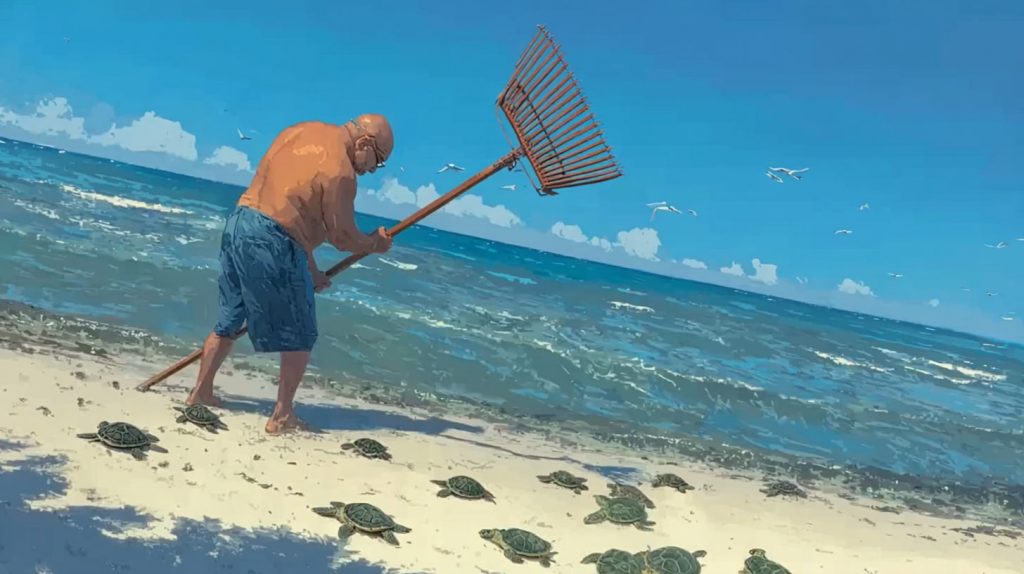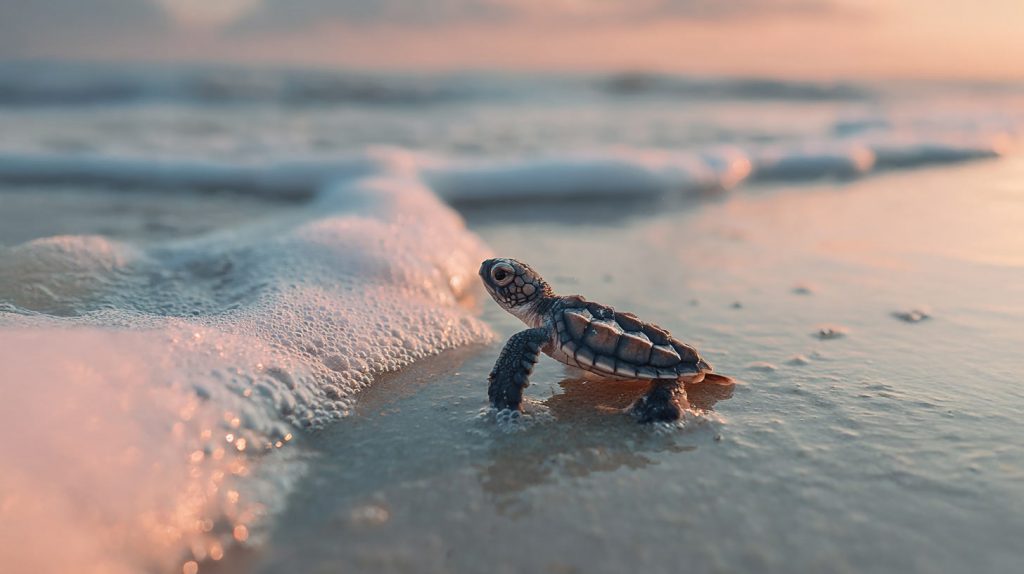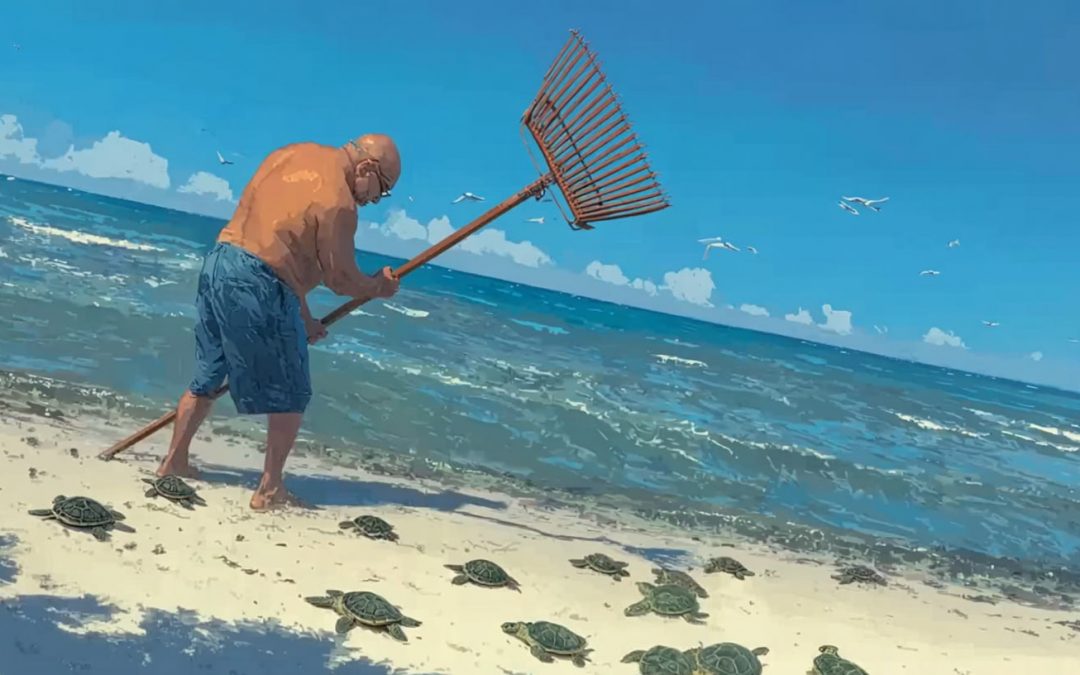Beach Rake Hero Saves Hundreds Of Baby Turtles
Some stories restore your faith in people. On a sunny beach, a visitor named Rene Ramos saw chaos unfolding at the waterline. Hundreds of endangered baby sea turtles had just hatched and were making their first run to the ocean. Above them, hungry birds circled and dove. Instead of standing by, Rene grabbed a simple rake and changed the outcome. With quick thinking and steady hands, he created a moving shield so the hatchlings could cross the sand and meet the waves.
@reneramos371 #cuidando tortuguitas #playa ♬ sonido original – mariabottle
A Quick Rescue With A Big Impact
Newly hatched turtles face a long list of hazards in their very first minutes of life. Heat, footprints, trash, and lights can all confuse them. Predators are always watching. On this day, the biggest threat came from the sky. Rene walked with the swarm of hatchlings, holding the rake high to deter birds and swinging gently to stop low dives. The turtles pressed forward in bursts, pausing whenever a wave pulled back, then scrambling again. Step by step, the group reached the surf. Many would not have made it without help.
The scene was simple and powerful. Children cheered softly. Adults kept their distance and lowered bright screens. The wind thinned the flock of birds, and the last stragglers found the water. The beach looked the same as before, but the future had quietly truly improved.
Why This Moment Matters
Every rescued hatchling is a win for nature. Sea turtles lay many eggs because only a tiny number survive to adulthood. When a person steps in to reduce a sudden threat, it can shift the odds for an entire clutch. This rescue also shows how awareness and courage turn regular beachgoers into protectors. You do not need special gear to help in a safe, smart way. You only need to know what to do, respect local rules, and act with care.
What To Do If You See A Hatch
• Keep distance. Give the hatchlings a wide lane to the water and keep pets away.
• Dim the lights. Turn off flashlights and phone lights that can disorient turtles.
• Reduce obstacles. Smooth out deep footprints and pick up loose trash.
• Shield, do not touch. Use your body or a simple object to block birds, but avoid handling turtles unless directed by trained staff.
• Call for guidance. Contact local wildlife officers or the beach hotline to report the hatch.
How Communities Protect Hatchlings
• Night patrols monitor nests and guide turtles during peak hatching.
• Shielded lighting keeps beaches dark so babies head toward the moonlit sea.
• Volunteer trainings teach safe ways to assist without causing stress.
• Seasonal signs remind visitors to watch their step and leash pets.
• Beach cleanups remove hazards like plastic rings and fishing line.

Lessons For Responsible Visitors
Beach days and wildlife can go together when we move with intention. Walk near the waterline rather than through dune vegetation. Leave no litter. If you stop to watch a hatch, stay low, quiet, and calm. Follow instructions from rangers and volunteers. Take photos without flash, then put the phone down and enjoy the moment with your own eyes. The best memory is the sight of tiny flippers catching a wave and vanishing into the blue.
Simple Gear, Big Results
A rake is not a fancy tool. Yet used mindfully, it became a shield that cut down aerial attacks for a critical few minutes. That is often how conservation works. Common sense, humble tools, and a willingness to help can tip the balance. The key is to avoid direct contact, protect the path, and let nature do the rest.
Be Part Of The Next Good Story
You can turn your next beach walk into positive impact. Learn local nesting seasons. Save the hotline for wildlife responders in your phone. Pack a reusable bag for trash. Share what you learn with friends who visit. Speak up when someone gets too close to a nest. When the moment comes, your calm example could be the difference that sends a few more babies home to the sea.


